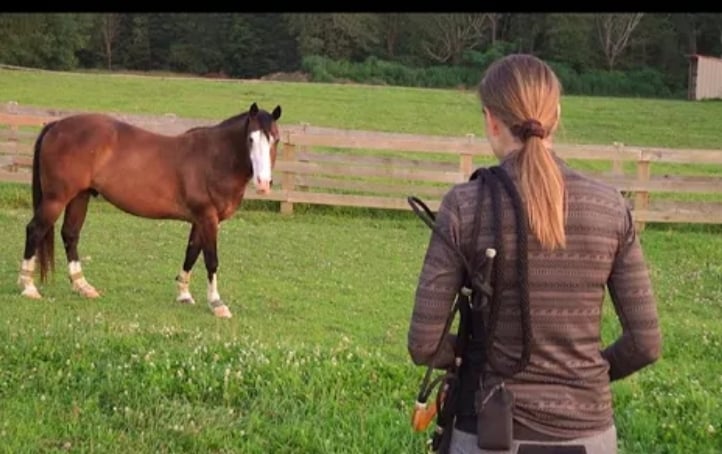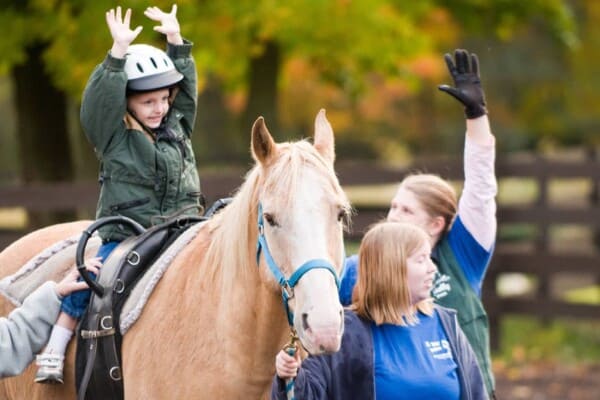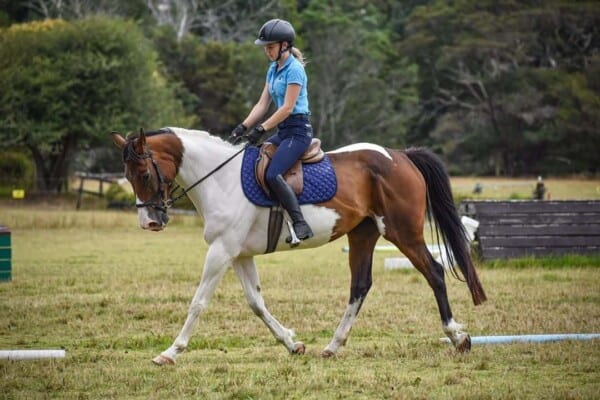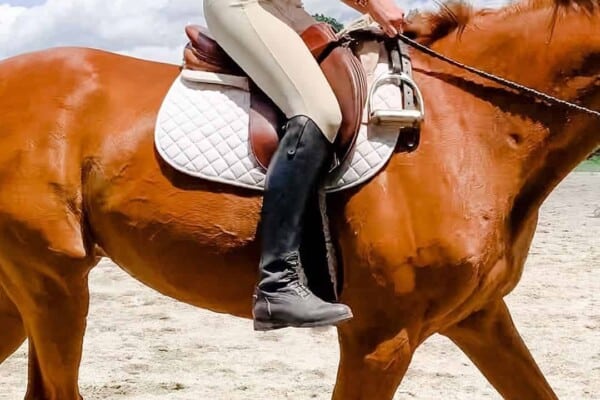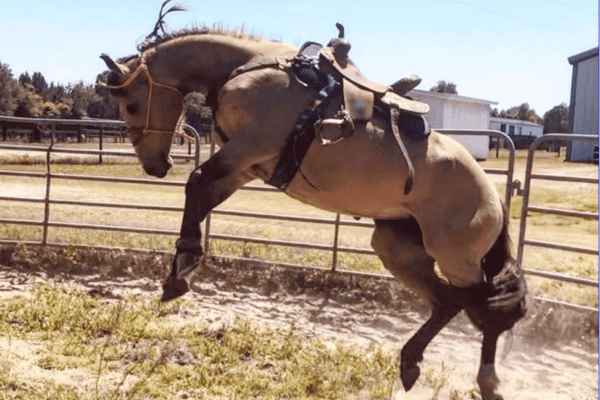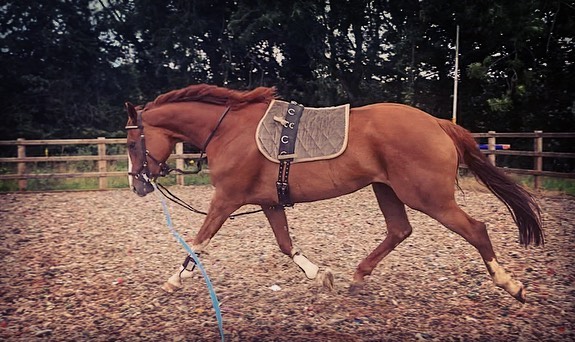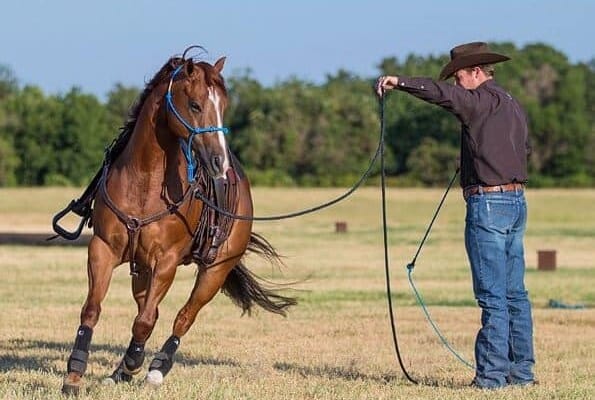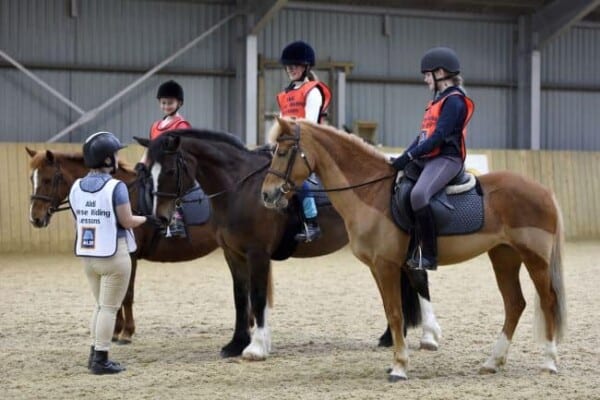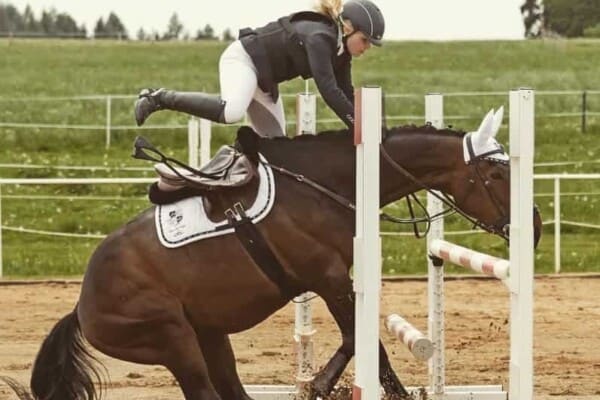Horses can be hard to catch for lots of different reasons and this problem is certainly one of the most frustrating and unwelcome aspects of horse behavior. Working out why the horse is hard to catch can help solve the problem but not always. Like many things equine, once you have hard a hard-to-catch horse you will build up a knowledge and experience pool in much the same way that you would if your horse is tricky to clip or difficult to load.
Why are some horses hard to catch?
Most horses can have an off day when they see the headcollar and turn round and run away but some horses are just persistent offenders. This stems from their base survival instinct which is to run away at the first sign of danger and ask questions later.
Some horses remain hard to catch because they were never started properly and do not have a great bond with people, for others, they are just a bit clever and know that the headcollar coming out can mean work or clipping or worming.
In an ideal world, you want the horse to come up to you in the field or come when he is called. New horses may be harder to catch but not if their groundwork has been done correctly and they engage properly with humans.
Top Horse Catching tips
- Equipment
- Leave a headcollar on the horse, you have precious little chance without one but make sure you use a safe design as headcollars can be an entrapment hazard
- Some people leave a piece of baler twine hanging from the bottom ring as this gives you something to get hold of although you should make sure that you don’t grab the horse in haste
- Never go to the field in riding kit unless that is what you usually wear and try to avoid wearing a riding hat as this is a real signal for some horses
- Tactics
- If you can, leave the one that doesn’t want to be caught until last, that can play the ‘herd instinct’ card but doesn’t work if there are lots of horses in the field unless you want to bring them all in just to catch the rogue
- Try and keep a hard to catch horse in a smaller area
- Bring the horse in regularly for grooming sessions and feeding and then turn out again so that coming in is not necessarily associated with work
- Spend time in the paddock without catching the horse so picking up droppings or weeding or checking fences, play it cool if the horse approaches you, most horses are quite curious and their curiosity will often get the better of them. If the horse approaches near enough for you to touch then give him a pat or a scratch or rub his withers which horses do naturally when they are mutually grooming
- Catching with feed can work if your horse is grazing alone – in a herd, it can cause havoc and you run the risk of injuries to yourself or the other horses. Bribery with food can work to a point but clever horses quickly become adept at grabbing a mouthful and running away. Food is relevant as a reward for a successful outcome, it is rarely as successful as bribery or inducement
- Training
- If your horse does not respond well to people on the ground, then you can spend time with him in a small enclosed area – a small paddock or large yard is perfect, a round pen is probably too small for these purposes. There are lots of training techniques which involve sending the horse away from you and being able to control his response so that you decide when he approaches and what he does – this can help to form a bond of mutual trust and an effective partnership on the ground.
- Horses which are hard to catch because they have not had proper early groundwork can be difficult in other aspects of the horse/human relationship so you may find that improving this aspect of your partnership will impact positively in other areas such as clipping or loading.
- Psychology
- Always remain calm and patient even if inwardly you are feeling anything but; horses can read people like a book and any suggestion of annoyance or concern will send the horse galloping for the hills. If you can’t fake it then ask someone else to catch him but if your horse is suspicious of strangers then this may not work either.
- Be positive but don’t march up to the horse in an aggressive fashion, equally, don’t be too tentative and hesitant either. Avoid eye contact and walk towards the shoulder of the horse rather than head on. If the horse allows you to approach near enough to touch then don’t just grab him – you may catch him this time but next time you probably won’t be so lucky. Spend time just giving him a scratch or massage.
- Hard to catch horses are like horses which are tricky to load or impossible to clip, these problems whether they are man made or just within the character of that particular horse, will all take time and patience to improve or solve.
- Always remember the golden rule of ‘catch, treat, let go’ when you are seeking to make improvements. If you can add to this some other management controls like using a smaller paddock – not always possible – grazing with another horse which you can remove first (although this doesn’t always work) or leaving a headcollar on which can be unsafe, then you could find a combination of management and more training will bring the horse the right side of the line. Some horses can remain persistent offenders irrespective of what you do and some horses will occasionally revert to type even if most of the time you have cracked the problem. And remember, never approach any horse to catch if you are upset or in a hurry as this is the quickest way to get injured even with a horse that is normally good to catch.

